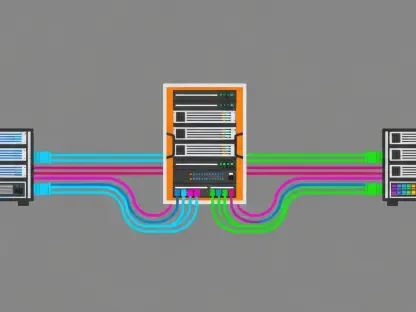Microsoft’s recent introduction of Muse, an open-source AI model designed to assist in video game development, presents an exciting advancement in generative AI technology. Muse is capable of creating interactive gameplay sequences from images, clips, and player input, streamlining the brainstorming and iteration process for developers. Described as a “World and Human Action Model,” this AI maintains consistency across multiple frames and integrates player actions seamlessly. Available on Azure AI Foundry, Muse aims to predict up to 30 seconds of gameplay based on minimal player input and footage, potentially revolutionizing the game design landscape.
Microsoft’s Innovative Approach
Revolutionizing Game Design
Muse is primarily focused on aiding developers in the early stages of game design by offering a powerful tool for brainstorming and ideation. Rather than creating polished, end-user content, Muse assists developers in visualizing cohesive game concepts quickly. For instance, Ninja Theory plans to employ Muse to draft and explore various game ideas efficiently without directly using it for final game content creation. This approach reflects a broader trend among developers who see the value of AI as a facilitation tool rather than a replacement for hands-on creative work.
Such an application of AI in game development signifies a shift towards integrating technology as a collaborative partner in the creative process. Muse can quickly generate interactive sequences, enabling developers to iterate on and refine their ideas with greater speed and efficiency. This could lead to more innovative and diverse game concepts, as developers are freed from some of the more monotonous aspects of early-stage design work. Muse’s ability to maintain consistency and design integrity across frames ensures that the generated sequences are not only creative but also coherent and usable.
Muse and Ethical Considerations
Despite its promising potential, the introduction of Muse has not been without skepticism and concern within the game development community. Critics, including experienced developers like David Goldfarb and Marc Burrage, have voiced fears that even limited use of AI in prototyping could undermine traditional, hands-on development experience. There is also the issue of ethical implications regarding the use of AI training data. Many worry that reliance on AI could dampen the unique and skilled craftsmanship that human developers bring to game creation.
However, Microsoft has proactively addressed some ethical issues by opting to train Muse on data sourced from games it owns, such as Bleeding Edge, and ensuring that all player telemetry data used was collected with consent. This approach sets a positive precedent for ethical AI usage in game development, potentially alleviating some concerns about data privacy and consent. It also highlights the importance of transparency and ethical considerations in the deployment of AI technologies within creative industries.
Broader Impacts of Muse
Preservation of Older Games
Phil Spencer, head of Xbox, has speculated on the broader potential of technologies like Muse in the realm of game preservation. Muse might play a crucial role in facilitating the transfer of older games to modern platforms, helping to preserve gaming history for future generations. This capability could prove invaluable in maintaining the accessibility and playability of classic games as technology continues to evolve. However, there are valid concerns about the quality and authenticity of such AI-generated versions of classic games.
The debate centers around whether AI can faithfully replicate the nuanced experiences and intricate designs of older games. Skeptics argue that AI-generated versions may lack the original’s charm, complexity, and authenticity. Despite these concerns, the potential benefits of using AI for game preservation are significant, particularly in ensuring that valuable cultural artifacts in the form of video games are not lost to technological obsolescence. The ongoing improvements in AI technology may eventually bridge the gap, delivering both faithful reproductions and enhanced versions of classic games.
Future Prospects and Ethical Considerations
Microsoft has recently unveiled Muse, an innovative open-source AI model designed to enhance video game development, signaling a significant leap in generative AI technology. Muse has the ability to generate interactive gameplay sequences derived from images, video clips, and player inputs, thus making the brainstorming and iteration phases smoother for game developers. Termed as a “World and Human Action Model,” this AI ensures consistency across various frames and integrates player movements seamlessly into the gameplay. Muse, accessible via Azure AI Foundry, has the capability to predict up to 30 seconds of gameplay based on minimal input and footage from players. This feature might revolutionize the design landscape of the video game industry by significantly reducing the time and effort required for game development. By enabling rapid prototyping and iteration, Muse supports developers in exploring more creative and complex gameplay scenarios, potentially paving the way for unprecedented advancements in video game design and player experience.









